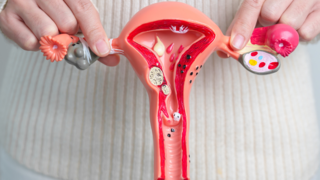In this article:
What is Twin-to-Twin Transfusion Syndrome (TTTS)?
Twin-to-Twin Transfusion Syndrome (TTTS) is a rare pregnancy complication affecting identical twins who share a single placenta. These twins are called monochorionic twins. In normal instances, identical twins sharing the same placenta equally share blood and nutrients. However, this is not the case with twins having TTTS.In TTTS, one twin (called the donor twin) receives less blood, while the other (the recipient twin) receives more than it needs. This difference can affect the growth and development of both babies.
How does TTTS happen?
In pregnancy with identical twins, both babies share a single placenta. The blood supply to the babies is connected by tiny blood vessels. If these vessels don’t share blood evenly, one baby receives too much blood and the other too little. This uneven blood flow causes Twin-to-Twin Transfusion Syndrome (TTTS).TTTS is not due to genetics or anything a mother does during pregnancy. It happens by chance and cannot be prevented.
How does TTTS affect each twin?
TTTS affects both twins differently.Donor Twin:
This twin gets less blood, so it grows more slowly and has less amniotic fluid around it. It also produces less urine, and in severe cases, the sac may shrink and press against the baby.
Recipient Twin:
This twin gets too much blood, making its heart work harder. It may produce extra urine, leading to too much amniotic fluid and stretching of the sac and uterus.
What are the signs and symptoms of TTTS?
Most women with TTTS do not experience clear symptoms. When symptoms do appear, they can include:- Rapid growth of the belly
- Sudden weight gain
- Tightness or discomfort in the abdomen
- A size difference between the twins
- Presence of excessive fluid around one baby and too little around the other
- Changes in blood flow between the twins
How is TTTS diagnosed?
If you are carrying identical twins, your doctor will use ultrasound scans to check for TTTS. Your doctor will look for:- Differences in baby sizes
- Imbalanced amniotic fluid levels
- Uneven blood flow between the twins
How is TTTS treated?
The treatment for Twin-to-Twin Transfusion Syndrome depends on how far along you are in your pregnancy and the severity of the condition:- Observation and Monitoring: For mild cases, regular scans are performed to check if the condition is progressing.
- Amnioreduction: Here, excess amniotic fluid is drained from the recipient twin’s sac to reduce pressure. This helps relieve your discomfort but doesn’t fix the root cause, so repeat procedures may be needed.
- Septostomy: A small hole is made between the twins’ sacs to balance the fluid pressure.
- Laser Surgery (Fetoscopic Laser Ablation): In this process, a tiny camera and laser are used to seal off the shared blood vessels causing the imbalance. This allows each twin to have its own blood circulation. It’s usually done between 16–26 weeks of pregnancy.
- Umbilical Cord Occlusion: In severe cases, this procedure stops blood flow to one twin to save the other. It’s considered only as a last resort.
- Delivery: If your pregnancy has reached a viable stage, early delivery may be the safest option.
What are the complications of TTTS?
Without proper monitoring and treatment, TTTS can cause serious complications such as:- Premature birth
- Growth delay or kidney issues in the donor twin
- Heart strain or heart failure in the recipient twin
How to cope with TTTS?
A TTTS diagnosis can be frightening. It is absolutely normal to experience uncertainty and anxiety. Hence, it is important to:- Stay in contact with your healthcare provider
- Discuss any concerns you may have about your health
- Seek support from family, friends, or counsellors.
Whether you’re pregnant, a new mom, or navigating postpartum, you don’t have to do it alone. Join our support group to connect, share, and support one another.
FAQs on Twin-to-Twin Transfusion Syndrome (TTTS): What It Is and How It Happens
- Who gets affected by Twin-to-Twin Transfusion Syndrome (TTTS)?
TTTS occurs only in identical twin pregnancies where both babies share one placenta. It is most common in twins with separate amniotic sacs (monochorionic diamniotic) and rare when they share both the placenta and sac. - How common is Twin-to-Twin Transfusion Syndrome (TTTS)?
Around 15% of identical twin pregnancies that share one placenta (monochorionic twins) develop TTTS. - When does TTTS usually develop during pregnancy?
TTTS can develop at any time after the first trimester. However, it is most commonly seen between 16 and 26 weeks of pregnancy. - Is TTTS a rare problem?
Yes, Twin-to-Twin Transfusion Syndrome (TTTS) is a rare pregnancy complication. However, it is still important to get routine checks done in case of pregnancy with identical twins.










